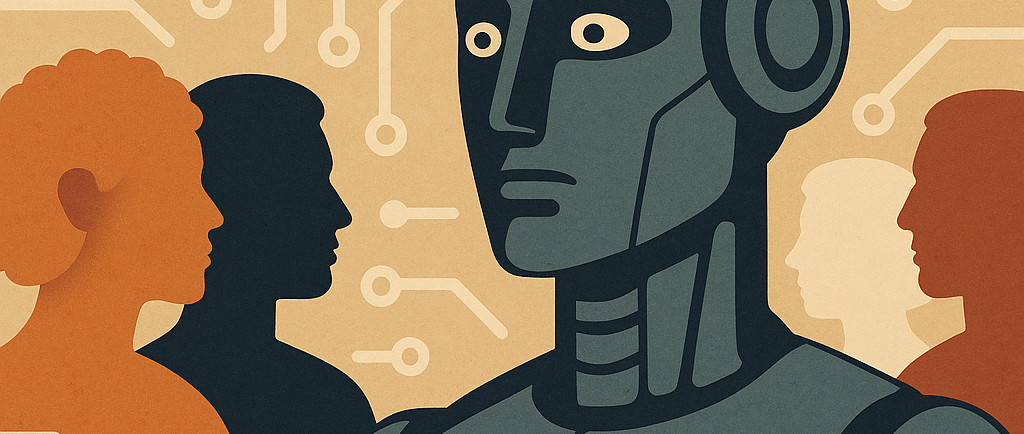Bias in AI: What It Means and Why It Matters More Than Ever
Explore how bias in AI is unintentionally embedded through data, why it matters as AI becomes more integrated in society, and what we can do to build fairer systems for all.
Shannon McDowell
5/14/20253 min read


Bias in AI: What It Means and Why It Matters More Than Ever
Artificial Intelligence is already shaping the way we search, shop, create, and communicate. From voice assistants to personalized recommendations, it’s woven into our daily routines — often without us even realizing it.
As someone who genuinely loves the possibilities of AI, I believe in its power to unlock creativity, improve productivity, and help level the playing field. But like any powerful tool, AI also comes with risks. One of the most pressing issues? Bias.
Not science fiction bias. Not abstract ethical debate bias. I mean real-world, right-now bias — baked into the algorithms that are making decisions about what we see, what we buy, and how we’re perceived.
What Is AI Bias, Really?
AI bias occurs when an artificial intelligence system reflects human or systemic prejudices present in the data it was trained on. These biases can show up in many forms: gender, race, socioeconomic background, age, disability, and more.
The problem usually isn’t that someone is sitting behind a computer, programming discrimination directly into the model. It’s more subtle than that. It’s in the data.
AI systems learn from massive datasets — millions or even billions of pieces of text, images, or audio. If that training data contains skewed perspectives or historical inequalities, the AI model can absorb and replicate them.
In other words, AI can be a mirror. And sometimes what it reflects isn’t flattering.
Real-World Examples of AI Bias
This isn’t just a theoretical concern.
Hiring Algorithms: Some companies used AI to screen resumes, only to discover the system was favoring male candidates for technical roles. Why? Because historical hiring patterns were biased, and the AI picked up on those trends.
Facial Recognition: Studies have shown that certain facial recognition systems perform worse on people with darker skin tones. This led to misidentifications in security and policing systems, with serious consequences.
Healthcare Predictions: Algorithms designed to flag which patients need extra care sometimes deprioritized minority groups. Not because of intent, but because the training data reflected unequal access to healthcare.
These examples are uncomfortable. They should be. But ignoring them would only let the problem grow.
Why It Matters More Than Ever
AI is moving from novelty to necessity.
Businesses are embedding it into their workflows. Schools are starting to use it for tutoring. Governments are experimenting with it for public services. As AI becomes more central to how we live, bias in these systems becomes not just a tech issue — but a societal one.
When AI decisions scale, they scale fast. If a human makes a mistake, it might affect one person. If an AI system makes the same mistake, it can affect thousands — or millions — within seconds.
This is why responsible development matters. And it’s also why optimism and criticism must go hand in hand.
What Can We Do About It?
Despite the risks, I’m not anti-AI. Far from it. I want AI to be better. I want it to serve more people, more fairly, more transparently. And that means pushing for solutions, not just pointing out problems.
Here are a few things we can do:
Diversify the Training Data
The more representative the data, the more balanced the outcomes. Including voices, cultures, and perspectives from across the globe helps reduce blind spots.Audit and Test the Models
Regular checks for bias should be standard. Just like we test brakes on a car, we should be stress-testing AI systems for fairness.Transparency in How AI Works
Let’s make it easier for people to understand how decisions are being made. Explainable AI can help users — and developers — spot problems earlier.Inclusive Design Teams
Bringing in voices from different communities, backgrounds, and abilities can help catch potential problems before the model goes live.Public Pressure and Policy
Governments and watchdog groups can play a role in creating guidelines for ethical AI development. But so can individuals. The more we talk about this, the harder it is to ignore.
Final Thoughts
Bias in AI isn’t a reason to fear the technology. It’s a reason to improve it.
We’re at a crossroads where AI can become a powerful force for good — or a tool that quietly reinforces inequality at scale. The difference will come down to who’s building it, who’s watching it, and who’s speaking up.
If you care about AI, speak up.
If you use AI, stay curious.
And if you believe in AI — like I do — then let’s help shape it into something we’re proud to hand off to future generations.
Transformative AI Solutions
© 2025. Transformative AI Solutions.
All rights reserved.
Contact: admin@transformativeaisolutions.com
Legal